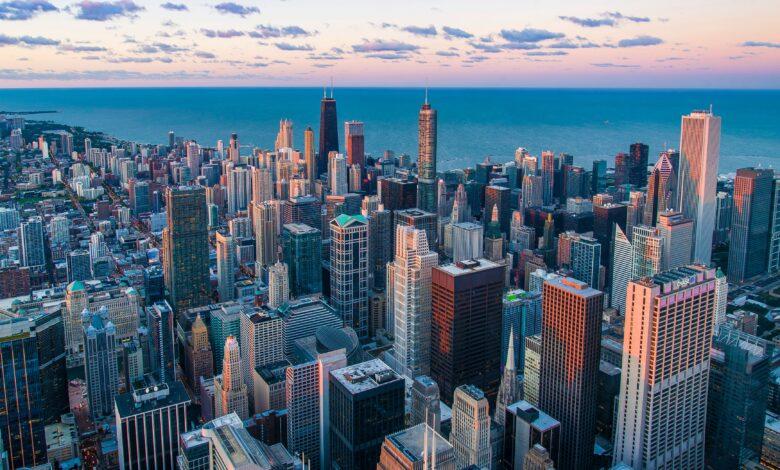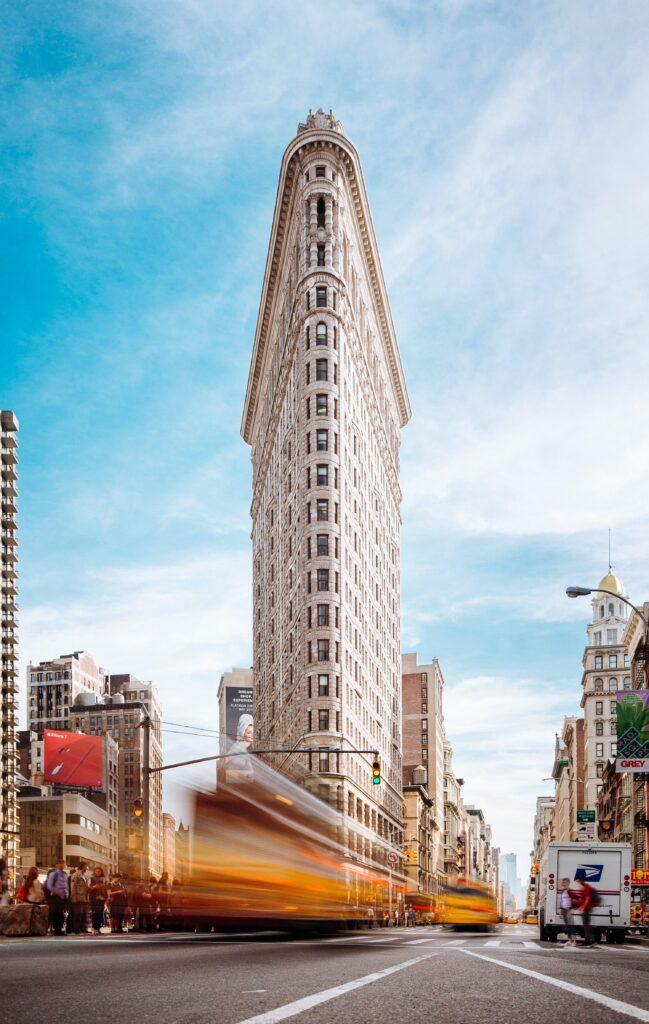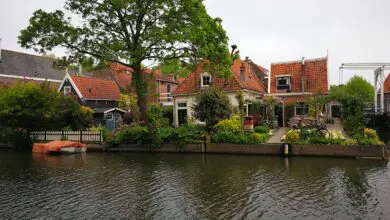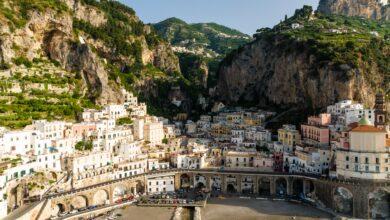🏰✨ The Enchantment of Prague: A Fairytale City 🌆🧚♂️
Discover the Magical Charms and Timeless Beauty of Prague's Fairytale Landscape

Introduction
Nestled along the winding curves of the Vltava River, Prague, with its intricate tapestry of history, architectural wonders, and old-world charm, stands as a living fairytale. Often referred to as the “City of a Hundred Spires,” Prague’s cobblestone streets echo with the whispers of centuries gone by. In this exploration, we unveil the enchantment that weaves through every corner of this magical city, where the past and present dance in harmony, creating a captivating narrative that transcends time.
Prague’s Historical Tapestry
Prague, a city steeped in history, unfolds like a captivating tapestry, weaving together centuries of cultural evolution, resilience, and architectural marvels. This Central European gem has witnessed the rise and fall of empires, and its streets echo with tales of kings, artists, and rebels. Let’s delve into the intricate threads of Prague’s rich past.
Overview of Prague’s Rich History
Prague’s history reads like a compelling novel, each chapter leaving an indelible mark on the city’s identity. From its medieval roots to the present day, Prague has been a focal point of European history. The city’s strategic location on the Vltava River made it a natural crossroads for trade and culture, fostering a diverse and dynamic heritage.
Throughout the centuries, Prague has weathered the storms of war, political upheaval, and cultural shifts. Its resilience shines through, with each challenge met with an unwavering spirit that has become synonymous with the city. Today, as you stroll through its streets, you can sense the layers of history beneath your feet, a testament to Prague’s endurance and ability to adapt.
Highlighting Key Historical Landmarks
No exploration of Prague’s historical tapestry is complete without a visit to its iconic landmarks. Prague Castle, a majestic fortress overlooking the city, stands as a symbol of power and grandeur. It has witnessed the reign of kings and the whispers of political intrigue.
Charles Bridge, another jewel in Prague’s crown, spans the Vltava River, connecting the castle to the Old Town. Lined with statues and artists, the bridge breathes life into the city’s medieval charm. As you traverse its cobbled path, you follow in the footsteps of countless generations, each leaving its mark on this architectural masterpiece.
Emphasis on the City’s Resilience and Cultural Evolution
Prague’s resilience is not confined to its cobblestone streets but is ingrained in the spirit of its people. The city has embraced change while holding onto its cultural roots, creating a unique blend of tradition and modernity. The arts, music, and literature have flourished in this dynamic environment, contributing to Prague’s vibrant cultural scene.
In the face of adversity, Prague has emerged not only as a survivor but as a thriving center of creativity. The juxtaposition of Gothic, Baroque, and modern architecture reflects the city’s ability to adapt without losing its historical essence. This cultural evolution is a living testament to the resilience that defines Prague, making it a destination where the past and present coexist harmoniously.
Architectural Marvels: Where History Meets Fantasy
In the heart of Central Europe, Prague stands as a living canvas where history and fantasy converge through its breathtaking architectural marvels. The city’s skyline is a testament to a rich tapestry of styles spanning centuries, creating a visual journey through time. Let’s explore the enchanting fusion of Gothic, Baroque, and Romanesque influences that shape Prague’s unique architectural identity.
Exploration of the Gothic, Baroque, and Romanesque Influences
Prague’s architectural landscape is a symphony of styles, with Gothic, Baroque, and Romanesque elements harmoniously coexisting. The Gothic influence is evident in the towering spires of St. Vitus Cathedral, a masterpiece within the walls of Prague Castle. Its intricate flying buttresses and pointed arches transport visitors to the medieval era, where craftsmanship reached celestial heights.
As we meander through the city’s labyrinthine streets, the Baroque style unfolds in a burst of grandeur. St. Nicholas Church in the Lesser Town is a prime example, with its lavish ornamentation and theatrical flair. Baroque architects aimed not just for structural beauty but sought to evoke emotion, and Prague’s Baroque gems achieve this with a mesmerizing elegance.
Romanesque architecture, characterized by robust arches and sturdy structures, finds representation in the Church of St. Martin in the Wall. This unassuming yet significant church provides a glimpse into Prague’s early architectural evolution, showcasing the durability and simplicity that define Romanesque design.
Highlighting Specific Buildings and Their Stories
Among Prague’s architectural gems, the astronomical clock in the Old Town Square stands as a captivating storyteller. The Prague Astronomical Clock, or the Prague Orloj, is not merely a timekeeping device; it’s a historical narrative in motion. Installed in 1410, it combines astronomical features, a calendar dial, and animated figurines, offering a glimpse into the medieval perception of the cosmos.
The Dancing House, a modern architectural marvel, disrupts the historical skyline with its deconstructivist design. Also known as Fred and Ginger, this structure, designed by Vlado Milunić and Frank Gehry, challenges traditional norms, embodying Prague’s ability to embrace innovation while honoring its past.
In the city where history meets fantasy, each building tells a story. From the spires reaching towards the heavens to the avant-garde designs pushing the boundaries of imagination, Prague’s architectural wonders invite visitors to embark on a visual and historical journey that transcends the ordinary.
Charm in Every Cobblestone: Prague’s Old Town
Nestled at the heart of Prague’s historical tapestry, the Old Town Square stands as a captivating testament to the city’s rich heritage and timeless allure. Stepping into this cobblestone haven is like entering a living museum, where every corner whispers tales of centuries past. Let’s unravel the enchantment woven into the fabric of Prague’s Old Town.
Introduction to Prague’s Old Town Square
As you wander through the labyrinthine streets of Prague’s Old Town, the square unfolds like a storybook panorama. Bordered by architectural wonders spanning various eras, the Old Town Square is a captivating crossroads where the medieval meets the modern. The Old Town Hall, with its iconic Astronomical Clock, anchors the square, drawing visitors into a world where time seems to stand still.
Description of the Astronomical Clock and Its Significance
The focal point of the Old Town Square is undoubtedly the Prague Astronomical Clock, a marvel of medieval engineering that transcends its practical function. Installed in 1410, this astronomical timepiece not only tells the hour but unfolds a spectacle at the strike of each hour. Tourists and locals alike gather in anticipation to witness the animated figurines and the Twelve Apostles in motion, a mesmerizing display that connects the present with Prague’s medieval past.
Beyond its enchanting aesthetics, the Astronomical Clock serves as a cultural touchstone, reflecting the medieval understanding of the cosmos and the inseparable link between science and art during that era. Its significance extends beyond timekeeping, making it a must-see emblem of Prague’s historical and scientific legacy.
Discussion of the Vibrant Atmosphere, Street Performers, and Local Markets
The Old Town Square is not merely a static tableau of history; it pulsates with life. The air is filled with the melodies of street performers, from classical musicians to lively folk bands, adding a soundtrack to your exploration. The vibrant atmosphere is further heightened by local markets, where artisans showcase their crafts, and the aromas of traditional Czech delicacies waft through the air.
Whether you’re captivated by the skillful performances or indulging in the array of local goods, the Old Town Square offers an immersive experience that transcends time. Each cobblestone exudes charm, and every step invites you to become a part of Prague’s living history, where past and present dance in harmony, creating a symphony of enchantment in the heart of the city.

The Vltava River: A Liquid Ribbon through Time
Flowing gracefully through the heart of Prague, the Vltava River is not merely a body of water but a liquid ribbon that weaves through the city’s rich history. Its meandering course divides Prague into distinct districts, each on either bank, creating a natural tapestry that reflects the soul of the city.
Depiction of the Vltava River’s Role in Prague’s Landscape
The Vltava River is more than just a scenic backdrop; it is an integral part of Prague’s landscape, shaping the city’s character and providing a vital connection between its diverse neighborhoods. As the longest river in the Czech Republic, the Vltava has been a witness to the ebb and flow of history, its currents echoing with the stories of the past.
Bridges, both historic and modern, span the river, becoming architectural milestones that not only facilitate movement but also serve as symbols of connection. The Vltava River, like a silent guardian, has stood witness to coronations, revolutions, and the daily life of Prague’s inhabitants, its waters reflecting the ever-changing face of the city.
Mention of Iconic Bridges and Their Historical Importance
Among the iconic bridges that span the Vltava, Charles Bridge stands as a symbol of enduring elegance and historical importance. Built in the 14th century, this pedestrian bridge has connected Prague Castle to the Old Town for centuries, its cobblestone pathway bearing the footprints of kings, soldiers, and traders. Another noteworthy structure is the Manes Bridge, a testament to modernist design and innovation, adding a contemporary chapter to Prague’s bridge saga.
These bridges are not merely conduits for transit but are living artifacts, each with its unique narrative etched into the very foundations that anchor them in the flowing waters of the Vltava.
Reflection on the Serene Beauty and Romantic Ambiance Along the Riverbanks
The riverbanks of the Vltava offer a serene escape from the hustle and bustle of the city, inviting both locals and visitors to stroll along its shores and soak in the breathtaking views. As the sun sets, the riverbanks come alive with a romantic ambiance, the lights of the city reflecting on the gently rippling waters. Couples, artists, and contemplative souls find solace along the Vltava, creating an atmosphere where time seems to slow down.
Whether by day or night, the Vltava River remains a constant in Prague’s ever-changing narrative, its liquid ribbon connecting the past, present, and future. As you stand along its banks, you become part of the city’s timeless tale, where the Vltava is not just a river but a poetic thread that ties together the chapters of Prague’s history.
Local Flavors and Folklore
In the heart of Prague, a city steeped in history and culture, the culinary landscape unfolds as a tapestry of flavors that reflects the richness of Czech tradition. From hearty classics to delectable pastries, Prague’s culinary delights are a journey for the senses, offering a taste of the city’s soul.
Culinary Delights in Prague
Prague’s culinary scene is a fusion of influences, blending Bohemian, Austrian, and Hungarian flavors to create a unique gastronomic experience. Traditional Czech dishes are a celebration of hearty and comforting fare, with ingredients sourced from local farms and markets.
One cannot embark on a culinary exploration of Prague without savoring the iconic Svíčková, a marinated sirloin steak bathed in a creamy sauce, served with dumplings. The rich and satisfying taste of this dish encapsulates the essence of Czech comfort food. Equally tantalizing is the famed Trdelník, a sweet pastry cooked over an open flame and coated in cinnamon and sugar, providing the perfect treat for those with a sweet tooth.
Venture into Prague’s traditional pubs and you’ll encounter the beloved Pilsner lager, a Czech beer that has become a symbol of the country’s brewing prowess. As you indulge in these culinary delights, you embark on a gastronomic journey that intertwines with the city’s history and culture.
Introduction to Traditional Czech Dishes
Traditional Czech dishes are a testament to the country’s agricultural heritage and love for simple, flavorful ingredients. Goulash, a hearty stew of meat and vegetables, speaks to the robust and warming nature of Czech cuisine. Dumplings, served alongside many dishes, are not mere side items but an integral part of the culinary experience, absorbing the savory flavors of the main course.
Czech cuisine also boasts a variety of soups, with Kulajda, a creamy mushroom soup with dill and poached egg, standing out as a local favorite. These dishes, crafted with care and pride, offer a taste of the past while evolving to cater to modern palates.
Brief Exploration of Local Folklore and Its Influence on Prague’s Identity
Beyond the culinary delights, Prague’s identity is intricately woven with local folklore. Tales of mythical creatures, medieval legends, and historical anecdotes add layers to the city’s character. The mystical aura of Prague Castle, intertwined with legends of the Golem, contributes to the city’s enigmatic charm.
Local folklore influences not only the stories told but also the art, architecture, and festivals that shape Prague’s cultural landscape. The fusion of folklore with daily life creates an immersive experience for both residents and visitors, allowing them to step into a world where reality and fantasy coexist harmoniously.
As you savor the flavors of Prague and delve into its folklore, you become a part of the city’s narrative. Each bite and every tale contribute to the vibrant mosaic that is Prague, a city where local flavors and folklore intertwine to create a truly unique and unforgettable experience.
FAQs
Q: Best time to visit Prague?
A: The enchantment of Prague is year-round, but spring and fall offer mild weather and fewer crowds.
Q: Can I explore Prague on foot?
A: Absolutely! The compact city center makes walking the best way to soak in Prague’s fairytale ambiance.
Q: Any must-try local dish?
A: Don’t miss trdelník, a sweet pastry, and svíčková, a delicious beef dish, for an authentic taste of Prague.
Q: Are English speakers common in Prague?
A: While Czech is the official language, many locals in tourist areas speak English.
Q: How to travel from the airport to the city center?
A: Opt for the convenient airport express bus or a taxi for a seamless journey to the heart of Prague.
Q: Are credit cards widely accepted?
A: Yes, credit cards are generally accepted in most establishments, but it’s advisable to have some local currency on hand.
Conclusion
As the sun sets over the spires and the Vltava River reflects the city’s golden glow, Prague remains an eternal fairytale. Its historical tapestry, architectural marvels, and charming streets come together to create an enchanting experience that lingers in the hearts of those fortunate enough to wander its lanes. The City of a Hundred Spires beckons, inviting all to immerse themselves in its fairytale magic—a timeless story that continues to captivate and inspire.
https://touristeyes.com/the-majesty-of-iceland-geysers-waterfalls-and-glaciers/





Facebook Comments